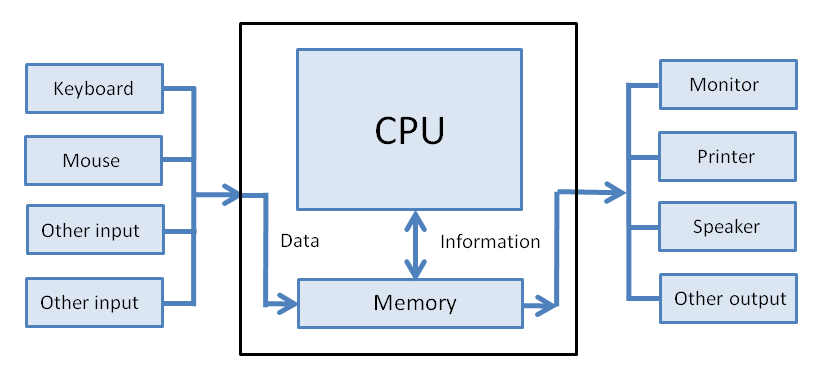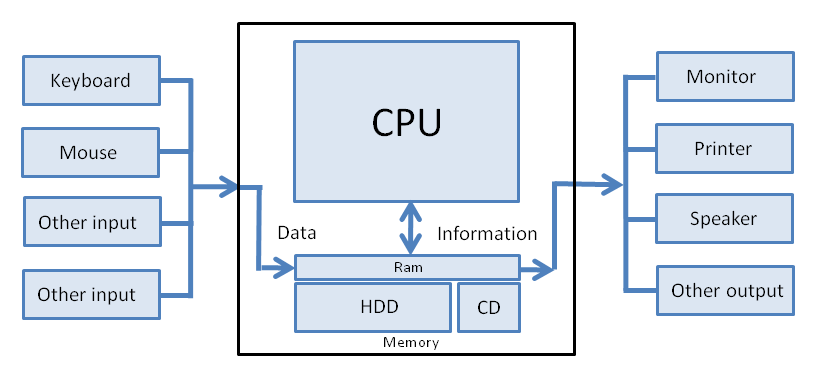Computer hardware and software
 From Wikiversity - Reading time: 2 min
From Wikiversity - Reading time: 2 min
This is a lesson in the course Introduction to Computers, which is a part of The School of Computer Science
Hardware
[edit | edit source]The term "Hardware" refers to the physical elements of a computer; the machinery or the electronics in a computer.A basic computer consists of 4 components:
- Input unit
- CPU
- Memory unit
- Output unit

Examples of hardware in a computer are the keyboard (Input unit), the monitor (output unit), the mouse (Input unit),the printer (output unit),the speaker (output unit),the memory and the CPU. Like the CPU, most of a computer's hardware cannot be seen; It's inside the computer case.

Memory is what allows a computer to remember things (data and information). Similar to human memory, there's long term memory (a hard disc or optical media (like a CD)) and short term memory (Random Access Memory (RAM)). When a computer is turned off, it forgets everything in the RAM, so the computer saves everything it knows it will need later on in the long term memory. The short term memory is easier to use because it can do I/O faster, so when data is needed by the CPU, it's sent from the hard disk drive (HDD) to the RAM. The short term memory lives on RAM, while the long term memory is in the hard disk drive (HDD). Optical disks let you change certain parts of the memory, it's kind of like having a book or notebook that you might read and get information from.

The motherboard is the home of I/O in a computer. The motherboard is a piece of hardware that makes connections in the right places between all of the other components in a computer.
It tells data where it should go. It is sometimes necessary to add functionality to a computer to keep it up to date, or make it better.
The amount of I/O a computer has can be changed, by adding expansion cards to the motherboard.
Sometimes functionality can be added through a universal port, a port that supports multiple kinds of I/O to a motherboard. USB, FireWire, and Thunderbolt (types of I/O) support multiple data types; Your keyboard and mouse typically connect to your computer's motherboard via USB.
CPUs or processors perform computations. They do the math for your calculator application, they compare the size of numbers; people have likened the CPU to the "brain" of a computer.

1. Monitor
2. Motherboard
3.CPU (Microprocessor)
4. Random access memory (RAM)
5. Expansion cards
6. Power supply unit
7. Optical disc drive
8. Hard disk drive (HDD)
9. Keyboard
10. Mouse
What next?[edit | edit source]
|
 KSF
KSF